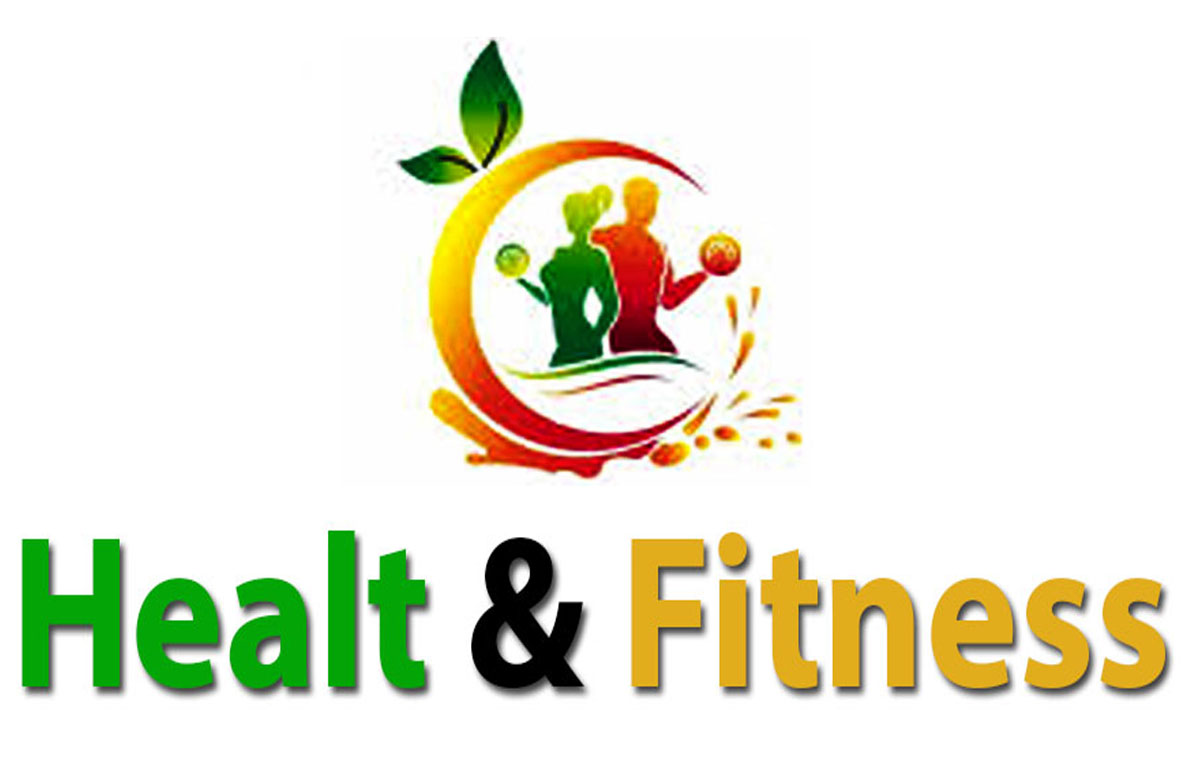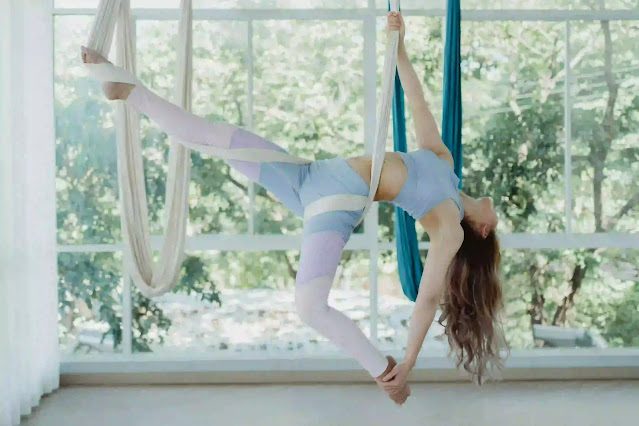Aerial Fitness Adventures: Gear and Techniques for Aerial Workouts.
Aerobic fitness has grown in popularity as a unique and enjoyable workout method. It uses a range of suspension equipment, including hammocks, hoops, and silks, to offer a unique method of exercising while defying gravity. Let's delve into the fascinating world of aerobic fitness, exploring the essential gear and techniques that make this exercise exciting and effective.
Introduction to Aerial Fitness
What is aerial fitness?
Aerial fitness integrates elements of acrobatics and dance, employing suspended equipment to perform exercises from the ground. Strength, flexibility, and balance are tested, and artistic expression is encouraged. an introduction outlining the thrills and advantages of aerial fitness. Highlight the full-body workout it offers, its growing popularity, and the sense of adventure it brings to workouts.
Aerial silk/tissue:
Aerobic silk, also known as aerobic tissue or fabric, is one of the most popular pieces of aerobic fitness equipment. They consist of long pieces of fabric suspended from a rigging point. Here's more about them:
Essential Gear for Aerial Fitness
A. Types of aerial silk:
Silk: Usually composed of nylon or polyester, it is flexible and durable.
Hammocks: Used frequently in aerial yoga, these props offer comfort and support during poses.
Hoops: A circular device used for spinning and posing during aerial hoop routines.
Considerations:
Fabric Type: Nylon or polyester for dependability and strength.
Length: Generally, the length of silk is 25 to 30 feet.
Rigging: Proper rigging and secure anchoring are crucial for safety.
B.Safety equipment:
Safety equipment is paramount in aerobic fitness to prevent injury and ensure a safe workout environment.
Required safety gear:
1. Crash Mat: A cushion for landings and falls beneath aerial equipment.
2. Harness: Used for more advanced moves or routines requiring extra safety.
3. Tools for Rigging: Strong rigging points, swivels, and carabiners guarantee stability and correct setup.
Importance:
1. Injury Prevention: The crash mat reduces impact and absorbs shock.
2. Fall Protection: Harnesses provide an extra layer of protection during complex maneuvers.
3. Quality rigging: Proper equipment ensures that equipment is securely attached.
C. Clothing and Accessories:
Comfortable and appropriate clothing is essential for an effective aerobic workout, focusing on flexibility and ease of movement.
Clothing:
1. Clothes that fit tightly: leotards, leggings, or fitted tops to prevent snagging on loose material.
2. Barefoot or proper footwear: Most aerobic workouts are performed barefoot for better grip, while some practitioners prefer special shoes for certain routines.
Accessories:
1. Grip Aids: Chucks or grip aids increase grip on tools, reducing slippage.
2. Hair ties and accessories: Keep hair secure and out of the face during workouts.
Wearing appropriate clothing is important.
1. Flexibility: Fitted clothing allows free movement.
2. Safety: Avoid loose clothing that may catch on the device.
3. Grip Enhancement: Chalk or grip aids improve traction and prevent slipping.
An in-depth comprehension of aerial silks and tissues, protective gear, clothing, and accessories for aerial fitness will be provided by this thorough segmentation. If you need more specific details or have other areas you'd like to explore, feel free to ask!
Techniques for Aerial Workouts:
A. Basic moves and warm-ups:
Basic Steps:
1. Climbing: Uses both hands and feet to climb up the silk.
2. Foot Lock: A method of stabilizing the foot by securing silk around it.
3. Reverse: While hanging upside down, strengthen your core and gain self-assurance.
Importance:
1. Foundation: These moves lay the foundation for more complex routines.
2. Increases strength: They engage different muscle groups, increasing overall strength.
Warm-up routine:
1. Dynamic stretching: Elongate muscles with movements like arm circles and leg swings.
2. Cardiovascular warm-up: Boost heart rate with light jogging or jumping jacks.
3. Joint mobility: Movement and rotation to increase suppleness and guard against damage.
Purpose:
1. Injury Prevention: Prepares muscles and joints for the demands of an aerobic workout.
2. Enhanced Performance: Improves blood flow and flexibility, enhancing overall performance.
B. Strength and flexibility training:
Exercise for strength:
1. Upper Body: Shoulder strengthening exercises, push-ups, and pull-ups.
2. Core: Planks, leg lifts, and hanging knee raises are used to develop core stability.
3. Legs: Squats, lunges, and calf raises strengthen the lower body.
Flexibility Routine: 1. Static Stretching: Hold stretches for various muscle groups, with the shoulders, back, and hamstrings receiving special attention. 2. Yoga-Based Stretching: Incorporating yoga poses to increase flexibility and balance. Benefits: 3. Strength Development: Builds the muscular endurance needed for aerobic techniques. 4. Improves flexibility: increases range of motion and helps execute advanced moves.
C. Progress and security measures:
Gradual progression:
1. Under Professional Guidance: Progress through the steps under the supervision of a certified instructor.
2. Skill development: gradually mastering basic moves before trying advanced techniques.
Security Gauges:
1. Proper Form: Emphasize maintaining proper body alignment to prevent strain or injury.
2. Help and spotting: When learning new moves, use crash mats or a spotter.
3. Rest and Recovery: Allow enough time for muscles to recover between sessions.
Importance:
1. Injury Prevention: Gradual progression minimizes the risk of strain or overexertion.
2. Skill Mastery: Step-by-step learning ensures skill and confidence in performing moves.
This thorough explanation will provide a thorough grasp of fundamental exercises and warm-ups, strength and flexibility training, progressions for aerobic fitness, and safety precautions. If you need more information about specific exercises or safety protocols, feel free to ask!
Benefits of aerial workouts
A. Physical Benefits:
Full-Body Workout:
1. engages the arms, core, legs, and back muscles simultaneously.
2. improves overall strength, endurance, and muscle tone.
Enhanced Flexibility:
1. Increases range of motion through stretching and dynamic movement.
2. increases the hips, shoulders, and spine's flexibility.
Improved balance and coordination:
1. Aerobic movement challenges balance and spatial awareness.
2. Improves coordination through fluid transfer between techniques.
B. Mental and emotional benefits:
Reduce stress:
1. Aerobic workouts act as a form of stress relief and mental relaxation.
2. The focus required during training can distract from everyday stress.
Boosting Confidence:
1. Acquiring new aerial moves and mastering techniques boosts self-esteem.
2. Overcoming challenges creates a sense of accomplishment.
Mind-Body Connection:
1. Practitioners increase mindfulness and body awareness as they focus on movement and breath control.
2. Promotes a deeper connection between mental and physical well-being.
C Unique experience and enjoyment:
A sense of adventure:
1. Aerial Fitness offers an exciting and unique workout experience.
2. Appealing to individuals seeking innovation and excitement in their exercise routines.
Artistic expression:
1. Allows practitioners to express themselves artistically through graceful movements and postures.
2. Routine choreography fosters creativity.
D. Additional Benefits:
Community and Social Engagement:
1. Creates a supportive community of aerobic enthusiasts and practitioners.
2. Provides opportunities for group classes and collaborative performance.
Core strengthening:
Aerobic workouts heavily engage the core muscles, which helps improve posture and stability.
Heart Health:
Certain cardiovascular exercises, like aerobic silk cardio workouts, improve cardiovascular health by raising heart rate and building endurance.
Aerial workout techniques
1. Fundamentals of Air Maneuvering
It is essential to learn basic techniques like locks, wraps, and aerial inversions. These techniques gradually build strength and coordination.
2. Building strength and flexibility
Consistent practice increases muscle tone and flexibility. Incorporating complementary exercises outside of the apparatus can accelerate progress.
3. Tips for beginners
Start with basic poses and gradually progress to more complex moves. Patience and persistence are key to mastering aerial techniques.
Choosing the right aerobic fitness class
1. Things to consider
Evaluate class sizes, instructor credentials, and safety protocols. An ideal classroom ensures personalized attention and a safe learning environment.
2. Find a reputable trainer
Look for certified instructors with a strong safety record. Their expertise and guidance are critical to a fulfilling and safe aerial fitness journey.
Safety measures during aerobic workouts
1. Importance of proper warm-up
A thorough warm-up routine prepares the body for the physical demands of aerobic exercise, reducing the risk of strain or injury.
2. Understanding limitations
Respecting personal limitations and avoiding overexertion is crucial. Listen to your body and progress at a comfortable pace.
3. Emergency protocol
Learn the emergency protocols so that you are prepared for unintentional falls or equipment failures. Being prepared is the key to staying safe.
Improving aerial fitness: progress and challenges
1. Progressing from beginner to advanced level
Gradual progression from basic postures to complex aerial sequences is part of the journey. Consistency and dedication pave the way to progress.
2. Overcome the challenge
Challenges are inherent in aerobic fitness. Embrace setbacks as learning opportunities and continue to refine strategies.
Maintenance and care of pneumatic equipment
1. Cleaning and maintenance tips
Regularly clean and inspect equipment for wear and tear. To guarantee longevity, adhere to the manufacturer's maintenance recommendations.
2. Regular inspection
Periodic inspections of rigging and equipment ensure safety. Replace worn parts quickly to avoid accidents.
Aerobic fitness is an adventure that blends artistic expression with physical skill; it is more than just a workout. By mastering the technique and using the right gear, individuals can embark on an exciting fitness journey while reaching new heights.
FAQs
1. Is aerobic fitness suitable for beginners?
Absolutely! Beginners can start with basic postures and progress gradually with proper guidance.
2. How frequently ought one to engage in aerobic fitness activities?
It all comes down to practice. Start with a few sessions per week and gradually increase the frequency as comfort and skill increase.
3. Is there an age limit for aerobic fitness?
Although aerobic fitness is adaptable, some classes may have age restrictions. Always check with the instructor or studio.
4. Can aerial fitness help with weight loss?
Aerobic workouts are a great way to improve fitness, but results vary based on individual effort and consistency.
5. Is aerial fitness safe?
When practiced under supervision and with proper equipment, aerobic fitness is generally safe. However, it is very important to follow safety guidelines.


.jpeg)

.jpeg)
.jpeg)

